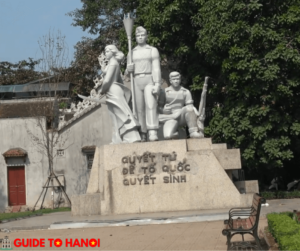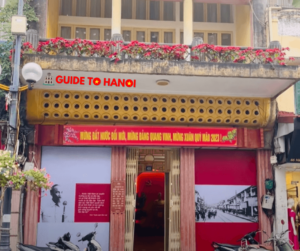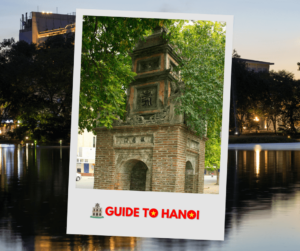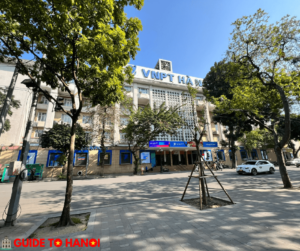Ho Chi Minh’s Stilt House
At the heart of Hanoi lies Ho Chi Minh’s Stilt House, a place of profound historical significance, the Presidential Palace relic area, where President Ho Chi Minh used to live and work from 1954 to 1969.
Let’s delve into the rich history and significance of this iconic site:
From Citadel to Capital: A Tale of Transformation
Originally part of the Imperial Citadel of Thang Long, this area transformed the French occupation, becoming the headquarters for French colonial rule in Indochina.
After Vietnam struggled for independence, it became the seat of the Communist Party and the State and President Ho Chi Minh’s residence.
A Meeting Place of Minds
The Presidential Palace was a hub of diplomatic activity, hosting many guests from political, social, and cultural spheres.
President Ho Chi Minh’s interactions with these diverse groups reflect the spirit of unity and inclusivity that defines Vietnam’s history.
Embracing Youth and Creativity
President Ho Chi Minh had a particular affinity for children, opening the doors of the Presidential Palace for them to play and organizing art exhibitions.
This gesture highlighted his love for the younger generation and their role in shaping the nation’s future.
The Stilt House: A Symbol of Simplicity
One of the notable features of the relic area is Uncle Ho’s stilt house, reflecting the simplicity and humility of President Ho Chi Minh’s lifestyle.
This house, built in the style of ethnic minority homes, offers a glimpse into his daily life.
A Living Legacy: Exploring the Relic Area
Encompassing more than 14 hectares, the relic area boasts a collection of structures and gardens steeped in profound historical significance.
From the Politburo meeting room to the mango street where President Ho Chi Minh strolled, each corner tells a unique story of Vietnam’s past.
Visit the Presidential Palace Relic Area
Experience Vietnam’s rich history and cultural heritage by visiting the Presidential Palace relic area.
Imagine President Ho Chi Minh’s legacy and witness the historical significance of this iconic site!
Plan your visit to the Presidential Palace relic area inside the Ho Chi Minh Mausoleum Complex and discover the vibrant history of Vietnam firsthand.
Experience the legacy of President Ho Chi Minh and the cultural richness of Hanoi today!
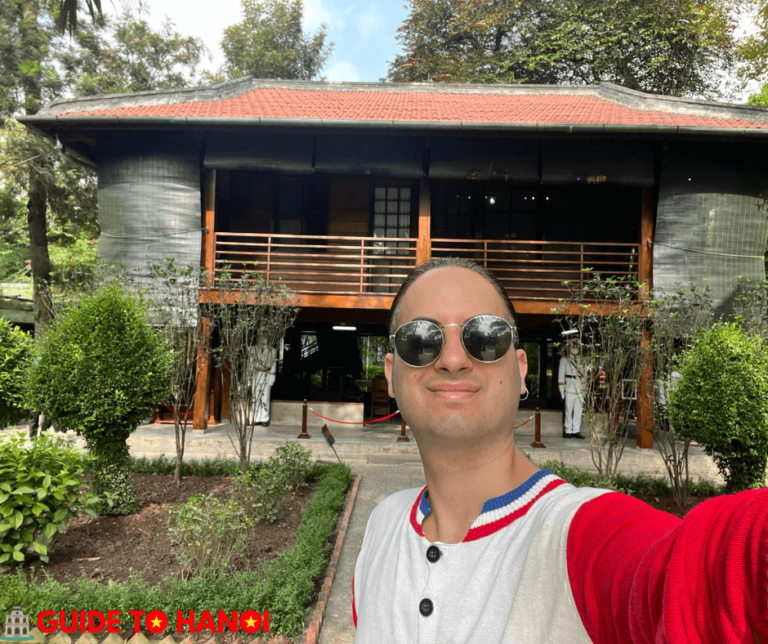
| Ho Chi Minh’s Stilt House | |
|---|---|
| Location | Presidential Palace relic area, Hanoi |
| History | President Ho Chi Minh lived here from May 18, 1958, to August 17, 1969. |
| Architecture | Built on stilts in the style of ethnic minority houses in Viet Bac. |
| Significance | Symbolizes President Ho Chi Minh’s simple and humble lifestyle. |
| Current Status | Restored and maintained as a historical site. |
Is there a dress code for Ho Chi Minh stilt house?
When visiting Ho Chi Minh’s Stilt House, adhering to a modest and respectful dress code is advisable, as it is a place of historical and cultural significance.
Please dress appropriately, avoiding clothing that is too revealing or inappropriate for a cultural site.
For more information, read the dress code for Ho Chi Minh Mausoleum.
Why are Vietnamese houses built on stilts?
Vietnamese houses are often built on stilts for several practical reasons, influenced by the country’s geography, climate, and culture:
Flood Prevention: Stilt houses are typical in areas prone to flooding, such as the Mekong Delta and other low-lying regions. Elevating the house above the ground helps protect it from floodwaters.
Ventilation and Air Circulation: Elevating the house allows for better airflow, which helps to cool the interior in Vietnam’s hot and humid climate. It also helps to reduce the risk of moisture-related issues like mold and rot.
Protection from Wildlife: Stilts can protect the house and its occupants from animals, insects, and reptiles that may be present in the area.
Cultural Significance: Stilt houses are a traditional architectural style in Vietnam, reflecting the country’s cultural heritage and connection to its rural roots.
Storage and Livelihood: The space under the house can be used for storage, livestock, or as a workspace, allowing for more efficient use of limited land.
Overall, stilt houses are a practical and culturally significant architectural style in Vietnam, offering protection from environmental factors while reflecting the country’s unique heritage.
Address:
- 1 P. Ngọc Hà, Đội Cấn, Ba Đình, Hà Nội
Contact:
Opening Hours:
- Daily: 8:00–11:00, 13:30–16:00
Entrance Fee:
- 40,000 VND per person

